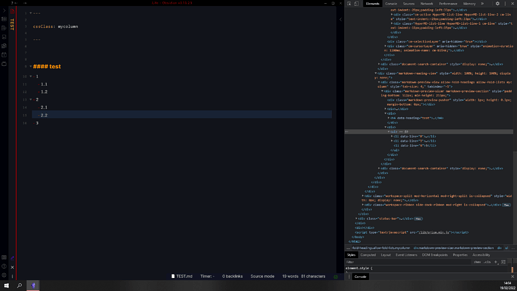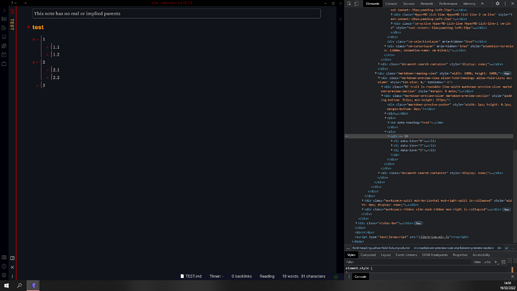Dear obsidian community. This is my first post, so I apologize if I posted in the wrong place.
Even if I don’t understand anything about programming (I’m a philosopher), in the past months I took the time to learn the basics of css and html in order to stylize my obsidian as much as possible, and I’m pretty happy with my results: I have a huge css file that controls pretty much every aspects of my vault, and I started using some inline html to add style to specific notes
Recently, I’ve started to come across some pretty advanced pages, like this one: GitHub - Rainbell129/Obsidian-Homepage: A dashboard for your obsidian vault., that literally blew my mind.
What I’m trying to do?
From what I’ve understood it is possible to write a css file capable of controlling single notes within the vault.
The step I am missing is: how it is possible to intervene on specific aspects of a note?
For example, let’s say I write the following list:
- A
- B
- C
If I have understood correctly, I could use some some “flex” command or “.container” to make the list display horizontally instead of vertically. But what I’m missing is mainly this: how is it possible to control externally the content of note in obsidian?
With some HTML inline commands I have achieved some styling results (<p style="margin-left:40em">, <br>), but nothing exciting; also I’ve seen that html inline does not display [[Links]], so that kinda defeat the purpouse.
Things I have tried
These are a couple of sources that I think focus on my problem, but there is something that eludes me.
I have tried writing a simple cssclass called “wow” to fiddle with the concept
But obviously if I insert something like:
.wow {
.container {
column-count: 3;
}
}
It display as an error.
And even if it didn’t, I wouldn’t know what to do next.
Let’s say I’ve got my columns into my css file, how do I insert text, links, buttons (and so on…) there? How can obsidian read it and display as a note accordingly?
I’m sure that I’m making a lot of confusion here, therefore I’m asking you for help before falling into an even greater confusion.
Thank your for your time.






